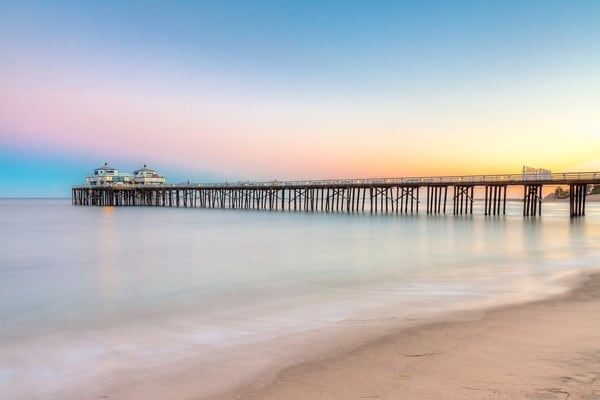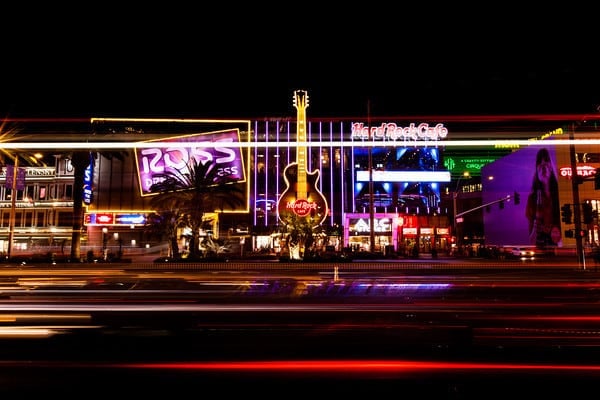Back in the old days, with film cameras, the shutter was a mechanical device in front of the film that would open and close for a set time, exposing the film. Even in motion pictures, you can notice the effect the shutter has on the picture. Typically, a film is shot at 24 frames a second with a 1/48-second shutter. But if you remember the fight sequences in Gladiator or even storming the beaches in Saving Private Ryan, they shot with a fast shutter to stop the motion, so everything looked crisp and real versus having that soft motion blur you get with a 1/48 shutter.
Now that film stock has been replaced by a digital sensor, you might be asking how the shutter works in digital photography. Well, it works the same. Most DSLRs still have traditional Focal Plane Shutters.
What does the shutter do?
The shutter is another system on the camera designed to control how much light gets passed to the film or the sensor. A slower shutter, like 1/10 or even 30 seconds, will allow more light to be exposed on the sensor, but if anything is moving, it will be distorted by motion blur. Something quicker, like 1/100, will allow less time and less light to be exposed on the camera’s sensor, so it will also do a better job of stopping any motion.
Say you were a sports photographer shooting a football game and wanted to get some nice crystal clear and still shots of the players in action. This would require a quicker shutter so nothing is distorted by motion blur. Something over 1/250 would be decent, but 1/1000 would even be better. This is partly why football games look so crisp on TV. They’re shooting with a faster shutter.
Now, say you were at the beach and wanted to get a nice landscape photo with the water looking silky smooth in the foreground. Then you might want something like a 6-second shutter or even a 30-second shutter so that all the waves blend into a smooth, misty surface.

What shutter speed should I shoot at?
The speed you set your shutter should depend on your situation and what you want from the photo. If you want to ‘stop time’ and have everything be very still and crisp, aim for something over 1/250.
If you’re on a tripod and you want objects to streak by, then a shutter of a few seconds is great.

If you’re shooting street photography or handheld and maybe you’re indoors or in a situation where there isn’t a ton of light, try to keep the shutter over 1/60 sec. When shooting handheld that’s as low as you’ll want to go, any slower and you’ll start getting motion blur from camera shake with your hands.
Many lenses and cameras today have built-in Image Stabilizers. If you have one of these, you can probably get away with shooting as low as 1/30 sec handheld.
What is the shutter or what does the shutter do in digital photography? That’s about all there is to it, really.
When should I use Shutter Priority Mode?
If you shoot with a DSLR or a new mirrorless, you might have noticed a few icons on your camera. AV, TV, M, B. These are settings to control what your camera prioritizes. The TV is the shutter priority. T represents Time. If you set your camera to this setting, you can manually adjust your shutter speed, and all other functions on the camera will work in auto mode to adjust for exposure.
I like to shoot on TV when dealing with a lot of motion, and I want my shots to be very crisp with no motion blur. This includes Weddings, Sporting Events, like surfing, baseball, and hockey. Nature photography is where you need to capture birds or animals that are constantly moving. By having the camera set to TV, I can control what shutter I want and how crisp my images are. So, for a wedding, a 1/100 is usually fine if it’s dark. If it’s outside, I go higher. Shooting animals at the zoo, you’ll want higher, at least 1/250.
The only other time I shoot in shutter priority is if I’m filming in movie mode and only when I’m not on full manual. In movie mode, I typically keep my shutter to around 1/48.
So now, next time someone asks you what the shutter does in regard to digital photography? You should have a clear understanding of what it does, how it works, and how you can even use it to improve your photography.
| **This website contains affiliate links. We will earn a small commission on purchases made through these links. Some of the links used in these articles will direct you to Amazon. As an Amazon Associate, I earn from qualifying purchases. |





